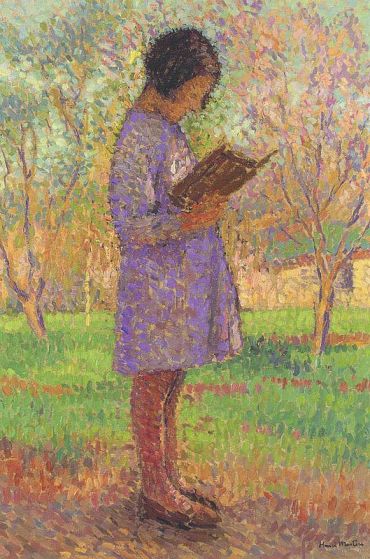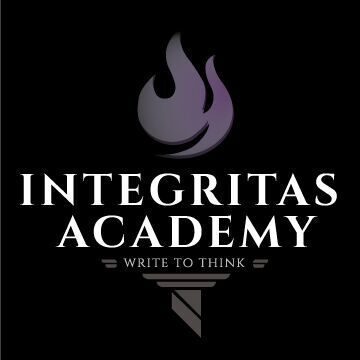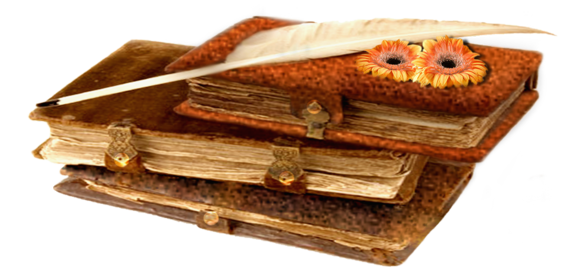
A year ago June I planned the curriculum and chose the texts for the new middle school course, including the poetry selections. At that time I became intrigued with the early American colonial poet Anne Bradstreet and became especially engaged with her autobiographical poem written in 1666, “Upon the Burning of Our House,” which I included in the poetry unit lesson plans for the new course. Little did I realize that three months later, I would be experiencing the burning of my own home in The Dixie Fire. Our home was one of only three which were destroyed in Lake Almanor, CA, and when I say destroyed, I mean – gone. What a “strange” circumstance which, upon reflection now, seemed a providential way of preparing me for the upcoming trial, and getting me thinking about what it would mean to lose the home where precious memories lie, and where inherited family treasures are lovingly cached.

Anne Bradstreet’s vocation was primarily that of a devoted wife and mother, and her poetry reflects her interests and affection for her family. The poem opens with her description of not only seeing but hearing the “thund’ring noise of” the flames as they sweep in and ravage her family’s home. Her subsequent response is to turn to God in her “distress” and while not denying the sorrow she experiences, she comes to terms with it, and learns to bless “his grace that gave and took.” She recounts her fond memories regarding some of the items she misses most, such as the dining table where she and her loved ones had gathered together every day. Then, in an allusion to the book of Ecclesiastes, she says goodbye to her lost possessions: “Adieu, Adieu, All’s Vanity,” moving on to express her new depth of understanding regarding the importance of faith and love, which will last, as opposed to material goods, which, while good, are not eternal. She contrasts the earthly home she has lost to the heavenly home she finds through her deepened faith, and concludes, “My hope and treasure lies above.” Rereading the poem now, it seems to me to be her own way of both letting go of her pain, but also, retaining the good memories in the light of faith and fellowship. In some ways I’m still processing what happened to our home, but like Bradstreet, I attempt each day to look beyond the loss towards the eternal values of love of God and others, hope, and friendship.

Jots and Thoughts

In the homeschooling arena there are two distinct camps: those who believe in highly structured education (often labeled “classical”) and the “unschoolers” who push against the strictures of / what seems to them to be a soul-crushing pedagogy. Both have their points but there’s a third way. Since children’s souls and minds are meant to be just as unified as those of adults, it’s up to us to give them instruction which fulfills their emotional well-being while simultaneously guiding them into how to learn and love to learn.
We all know that stuffing children’s minds full of facts is not the way to feed their souls. Rather, our constant commitment is to focus on how to help them enjoy learning so that they naturally and gently fold the facts they learn into the wider, larger scheme of their lives and environments. It’s not an easy job to pass on a love of learning, but as I contemplate starting another school year I remind myself that every child has a natural love of life and a curiosity about the wonders of the rich world surrounding them. There is much truth to the quote that learning is “caught, not taught”; as adults we are motivated by inspiration, and it’s the same for our students.
Learning in peace is the third way. Especially when it comes to the literary canon, the adage “quality, not quantity” is applicable. The point of the humanities is to learn how to  generalize truths and incorporate them in our lives and society. This is particularly true with literature. Truly reading and appreciating literature is a spiritual experience wherein students ponder and enjoy the characters, plots, and themes they encounter. Whenever possible they should have time to read in leisure rather than rush frantically through a mass of texts. As they grow older students will learn how to take in and integrate more knowledge while retaining the sense of peace and appreciation engendered in them when they were younger. They will become educated in the deepest and most genuine sense for they will be equipped to seek the virtuous “pursuit of happiness” the founding fathers of the United States understood to be the highest calling and fulfillment of the human experience.
generalize truths and incorporate them in our lives and society. This is particularly true with literature. Truly reading and appreciating literature is a spiritual experience wherein students ponder and enjoy the characters, plots, and themes they encounter. Whenever possible they should have time to read in leisure rather than rush frantically through a mass of texts. As they grow older students will learn how to take in and integrate more knowledge while retaining the sense of peace and appreciation engendered in them when they were younger. They will become educated in the deepest and most genuine sense for they will be equipped to seek the virtuous “pursuit of happiness” the founding fathers of the United States understood to be the highest calling and fulfillment of the human experience.

Best Beach Reads Part 2: For the Love of Mystery

Continuing my summer thoughts in the spirit of “Beach Reading,” I have a confession to make. I am a great lover of the mystery story, the traditional thriller, and yes, even the noir genre. Dorothy L. Sayers wrote in defense of the idea that reading about murder is a justifiable activity, even from a religious point of view. I’ll save comments about her thoughts for another time, but simply confess to you that I not only love a well written mystery, but think that they often qualify as legitimate literature.
There was a “Golden Age” of the mystery from about 1920 to 1950. During this era, British authors perfected the genre. They delighted in presenting highly puzzling plots which played “fair” and gave all of the clues a reader would need to solve the mystery, if he or she were paying close attention.
In recent years, while there have been some well-written mysteries, many (most?) are dumbed down and rather prosaic, so it’s best if a person can become acquainted with the “Golden Age” mysteries first. Here are some authors from the Golden Age literary-minded teenagers may enjoy:
Dorothy L. Sayers; John Dickson Carr; Agatha Christie (of course); Margery Allingham; Ngaio Marsh; Edmund Crispin; Josephine Tey; Michael Innes; Patricia Wentworth; G K Chesterton (The Father Brown mysteries)

Reading a good mystery is a lovely way for a book lover to take a break from more serious literature, while still enjoying great writing. My personal favorites are Ngaio March, Josephine Tey, G. K. Chesterton (his Father Brown character), and Michael Innes. And let’s not forget the original detective story writers: Edgar Allan Poe, Wilkie Collins, and Sir Arthur Conan Doyle.
Best Beach Reads Part 1
To start the summer, I’m sharing some favorite books and authors with you. You might like to try them sometime–maybe even this summer. When homeschooling our five children, I always looked forward to summer when I could explore “new to me” books in a leisurely manner.

I am selective about modern/contemporary literature, but there are a few authors I think are keepers. They are in no particular order, since I can’t decide which ones I like best. First on my list is Marilyn Robinson. I do not recommend starting with her earlier book, Housekeeping, but rather, go to her trilogy, starting with the Pultizer Prize winner, Gilead. Robinson has a strong grasp of the deeply Christian nature of our culture, and celebrates the family of a pastor in these brilliant novels.

Second on my list is Fred Chappell and his Kirkman tetralogy, beginning with I am One of You Forever. His books also focus on family and contain a spiritual ethos, but they have a comic side to them that makes me laugh out loud when I reread them. He was poet laureate of North Carolina from 1997-2002, and has also won many awards for his work.

Finally, I recommend Ron Hansen’s book, Atticus, which is a prodigal son story (also a mystery) full of warmth and hope. In addition to receiving many book awards, two of Hansen’s novels have been made into movies. Hansen is a professor in my home territory at Santa Clara University, where I received my teaching degree.
I’m happy to be able to recommend the books of these three living authors to you, and perhaps you will dip into one or more of them while dipping your toes in the water, or vacationing in some mountain idyll. All three of these authors know how to “dig in” and find the “stories” that make you appreciate and rejoice in life and faith.
I hope you all have a blessed summer with family and friends, no matter where you are or what you are doing.
Cindy Lange
integritasacademy.com
So Says Shakespeare
Benefits of Reading the Bard
The fourth quarter at Integritas Academy is dedicated to Shakespeare’s plays. In our Lit & Comp for Underclassmen courses we study As You Like It and Macbeth. Our Middle School courses enjoy The Tempest and Julius Caesar, and in Upperclassmen courses we do in-depth critical studies of The Merchant of Venice and of Hamlet .
Here are a few of the many wonderful reasons to study Shakespeare:
- master the rhythm of the language (including the iambic pentameter poetic sections)
- unpack the rich themes and humor as you gain understanding of the texts, written at the height of the English language
- expand your knowledge of history and England.
Tips for Reading the Plays
It’s important for students to read the original language, but there is nothing wrong with their following along with an updated version as they read the original, as long as the update is not just a summary. There are quite a few of these now, but the version online, “No Fear Shakespeare,” is a solid one. It also helps to read confusing sections out loud.
Students should try to get the “official” class version so we can “be on the same page” during our readings and discussions. There are various “folios” of the plays, so the line numbers are not always the same in different editions.
Getting to know The Bard is a great way to spend spring! If fact, he calls us to join him at this time of year:

From you have I been absent in the spring,
When proud pied April, dressed in all his trim,
Hath put a spirit of youth in every thing.
(Sonnet 98, 1-2)
Analytical Angst: Writing for Independent Thought
I teach writing according to the Jane Schaffer writing method, used by high achieving schools in their honors and AP programs. The Schaffer pedagogy meets the definition of “classical” because it leads students into developing critical thinking skills at an early age. Schaffer is qualitatively different from other popular “classical” writing methods, because Schaffer teaches them how to analyze,  interpret, and assess ideas. Put another way: students’ minds are engaged in such a manner that they are inspired to develop independent thought. This is because students are led to ponder what a character’s (or historical figure’s) motivations are, or what the consequences of his or her actions or words are, within the context of the theme and diction of the story.Schaffer is simply a codification of how analytical writing was taught traditionally. As I often tell students, they are like Sherlock Holmes walking onto a crime scene. They must look at the situation presented, as a whole, and from that assess what the important “evidences” are. The Schaffer method calls these “concrete details” (CDs). From there, students use the context of these facts to determine the theme(s) of the text. Why did the author use those facts at that point? Students also bring their own knowledge of life and universal truths to bear on the situation: What interpret, and assess ideas. Put another way: students’ minds are engaged in such a manner that they are inspired to develop independent thought. This is because students are led to ponder what a character’s (or historical figure’s) motivations are, or what the consequences of his or her actions or words are, within the context of the theme and diction of the story.Schaffer is simply a codification of how analytical writing was taught traditionally. As I often tell students, they are like Sherlock Holmes walking onto a crime scene. They must look at the situation presented, as a whole, and from that assess what the important “evidences” are. The Schaffer method calls these “concrete details” (CDs). From there, students use the context of these facts to determine the theme(s) of the text. Why did the author use those facts at that point? Students also bring their own knowledge of life and universal truths to bear on the situation: What  is the point of the passage? What does it reveal about the character, or what message is the author communicating to the reader? is the point of the passage? What does it reveal about the character, or what message is the author communicating to the reader?
When students begin to think analytically, they begin to think independently. Of course, this is the goal of a classical education, not the memorization of a bucketful of facts or texts. The necessity of having such skills before entering the halls of higher education cannot be overemphasized. The Jane Schaffer approach takes time to learn in the beginning–students are building up their “deductive” muscles. But with guidance and practice, they become independent thinkers. The “method” is a proven way to bringing students’ minds to bear, in order to train them to focus so that they successfully learn the process of analytical reasoning. As students begin to incorporate the techniques so that they think and write inferentially, they no longer need the Schaffer steps, as they have begun the process of independent thinking–the ultimate goal of our educational efforts. ©Cindy C. Lange, MA
|


